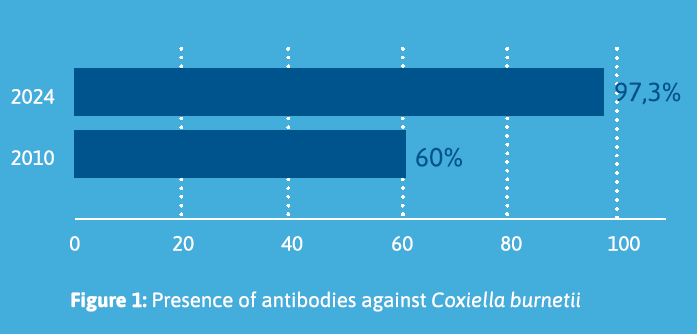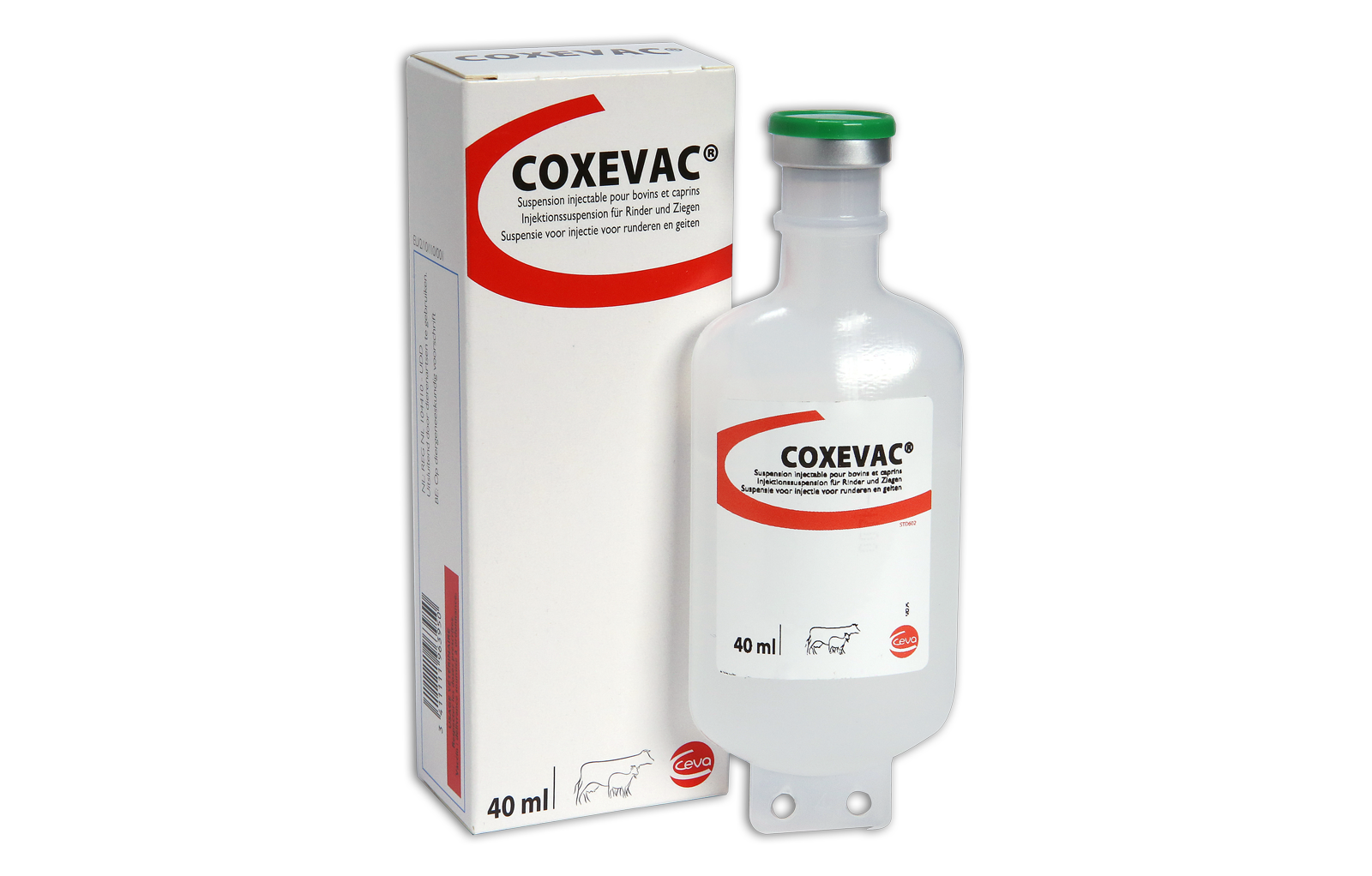Poster
Coxiella burnetii seroprevalence evolution during the last 14 years in the Northwest of Spain
Authors
U.Yañez, J. Álvarez, C. Pison, A. Acción, R. Barrionuevo, J.J Becerra, A. Jiménez, P. Gisbert, D Remmy, P.G Herradón, A.I Peña, J.M Cao, A. Prieto, L A. Quintela
Publication information
European Buiatrics Congress 2025
Objectives
Coxiella burnetii is the etiological agent of Q Fever in humans and coxiellosis in animals (Trachsel et al., 2023). Its environmental resistance made C. burnetii a highly infectious pathogen presents in every country around the world, with the exception of New Zealand and the Antarctica (Trachsel et al., 2023). Coxiellosis in cattle is often asymptomatic, but a possible relationship with various reproductive problems has been suggested. Due the zoonosis ability and the reproductive disorders associated, C. burnetii has been studied for the last decade. Spain is one of the European countries with the highest Q Fever incidence. However, there is limited epidemiological data in cattle in Galicia (Northwest of Spain).
In fact, there is only one study made about the prevalence of this bacterium in dairy cattle in this region (Yáñez et al.,2024). Therefore, the aim of this study was to determine the seroprevalence in the Northwest of Spain of C. burnetii using ELISA bulk milk testing and the evolution of the bacterium
seroprevalence in bulk tank milk samples (BTMS) between the years 2010 and 2024.
Materials and Methods
Thus, 50 BTMS were collected during the year 2010 and 36 BTMS were collected from January to June of 2024. All the BTMS were collected in 50 ml sterile Falcon tubes after mixing the bulk tank milk and were refrigerated (4-8 ºC) after the collection at the farm. At the same time, the BTMS were analysed using ELISAi. ELISAi was carried out with the commercial kit “ID Screen® Q Fever Indirect Multi-species” (IDvet, Grabels, France). The reading of the ELISAi were done with the spectrophotometer “Multiskan EX” (Thermo Scientific®, Waltham, MA, EE. UU.) and a 450 nm wavelength. Absorbances were converted to a optic density ratio between the sample and the control (S/P). S/P= (Sample optic density-Negative control optic density)/ (Positive control optic density-Negative control optic density) *100. The S/P titter was categorized negative (S/P ≤ 30), doubtful (30 < S/P ≤ 40) and positive (S/P > 30).
Results
In total, 97,3 % (35/36) of farms showed antibodies (> 30 S/P) against the bacterium in 2024, in comparison to data obtained in 2010, when 60% (30/50) of the dairies were positive (>30 S/P) (Figure 1). Likewise, 62.5% of the regions in 2010 showed antibodies against C. burnetii (Lugo = 53.9% and A Coruña = 71.4%). As expected, in the ELISA bulk milk testing done in 2024 the 100.0% of the regions showed antibodies against this bacterium. These results show a high presence, exposure, and geographical distribution of C. burnetii in dairy cattle farms in this region, and it also suggests that C. burnetii has increased the prevalence in both provinces studied during the last 14 years. On the other hand, a study carried out in 2018 concluded that in Basque Country the seroprevalence in sheep flocks did not significantly vary from 2005 (40.3%) to 2015 (32.1%), on the other hand the eroprevalence diminished during this period (Álvarez-Alonso et al., 2018).

Conclusions
This study suggests the high exposure and presence of C. burnetii in Galician cattle farms and the possibility of its involvement in reproductive disorders in farms with specific epidemiological profiles. Finally, it is important to consider that the high presence of C. burnetii in dairy farms could pose a risk to public health, therefore genotyping the strains circulating in herds in Galicia would be interesting to characterize the epidemiology.
Publication file:




